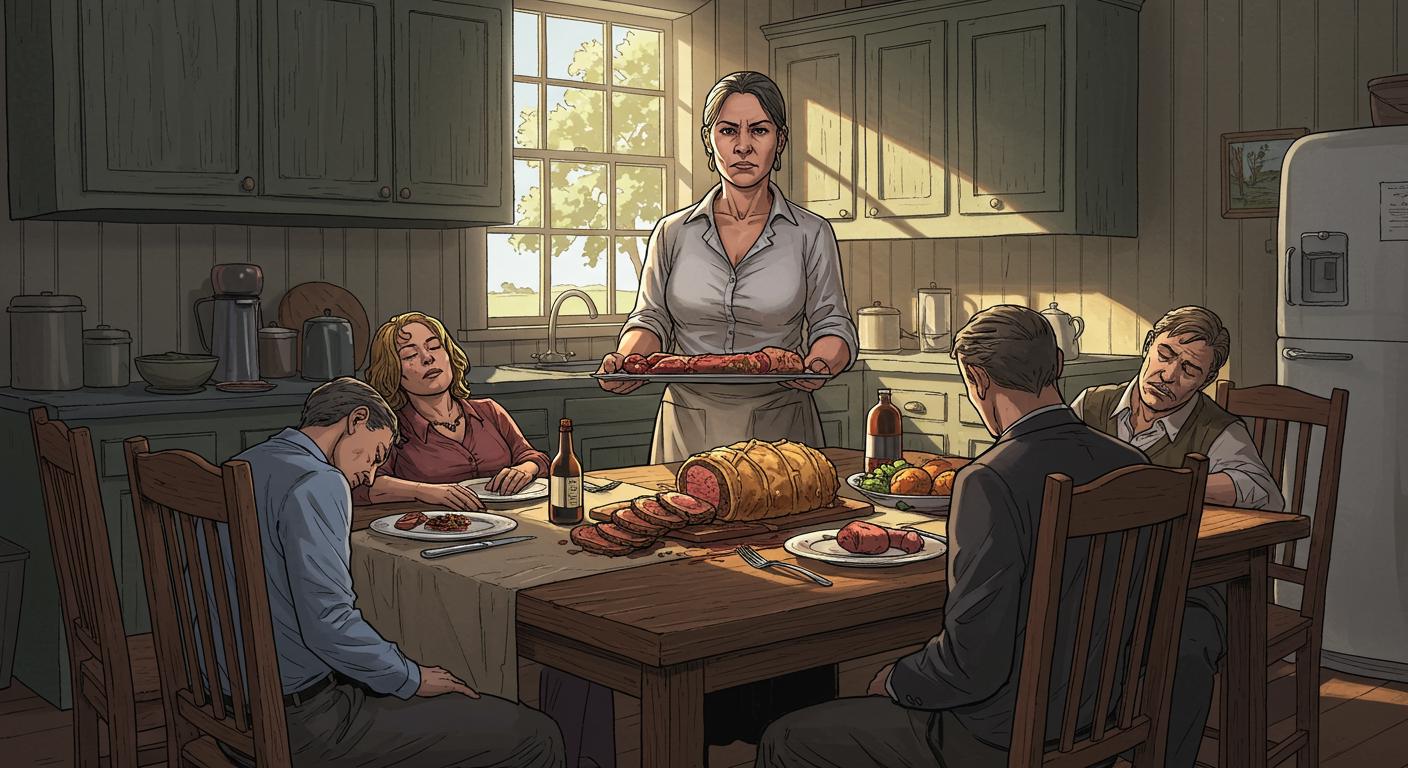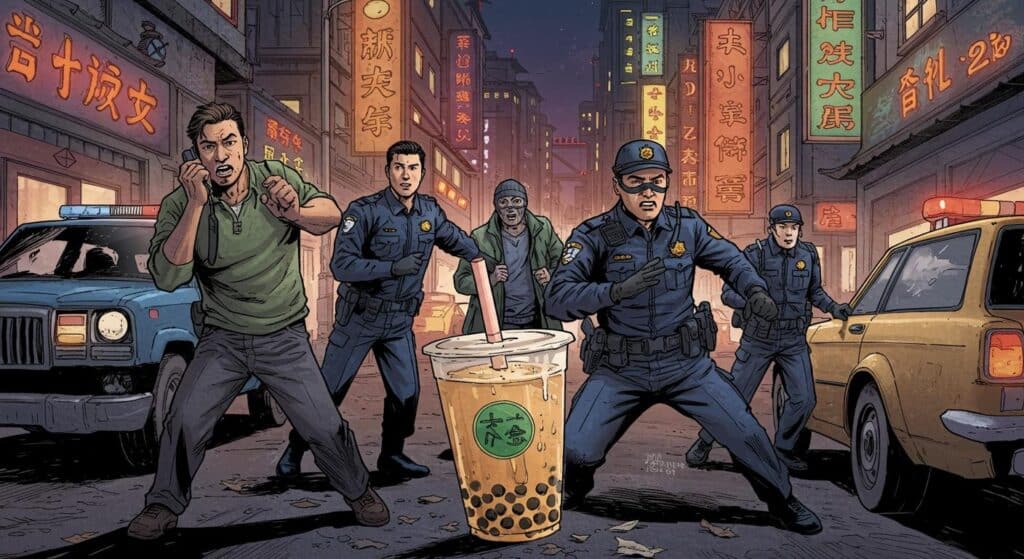Every so often, a story surfaces that reads more like the premise of an elaborate murder mystery than real life. The saga of Erin Patterson, convicted of murdering three family members and attempting to murder a fourth via a home-cooked Beef Wellington filled with death cap mushrooms, fits the bill. If dinner parties are usually remembered for their company or the odd argument over red wine, this one proved memorable for rather more permanent reasons.
A Luncheon Laced With Lethal Fungi
When Erin Patterson invited her former parents-in-law and their relatives for lunch in Leongatha, Victoria, the menu ostensibly promised comfort food. As detailed by CTV News, Patterson served individual Beef Wellington pastries at her home in July 2023. Hidden inside: death cap mushrooms, one of the most toxic fungi known to mycology and decidedly not something you’d expect tucked beneath a layer of golden pastry. The meal proved fatal for Don and Gail Patterson, and Heather Wilkinson. Heather’s husband, Ian Wilkinson, survived after an extended hospital ordeal, his recovery the lone reprieve in an otherwise grim accounting.
Authorities did not dispute the basic chain of events: Patterson cooked, served, and consumed some of the food, but only her guests suffered the lethal effects. The question that consumed a jury (and much of Australia, if media coverage is any indication) was whether this was a botanic mishap or a meticulously orchestrated crime.
Mushroom Forensics and Motives
According to CNN’s extensive report, the prosecution set out to demonstrate premeditation, arguing that Patterson had identified patches of death cap mushrooms based on locations posted on the iNaturalist website and ventured to forage them. Digital evidence placed her phone in these relevant locales months prior to the ill-fated lunch. Notably, prosecutors emphasized four “calculated deceptions”: fabricating a cancer diagnosis to lure her guests to the meal, preparing the poisoned Beef Wellingtons, simulating her own illness after the lunch, and then systematically destroying or deleting evidence—including a food dehydrator, found with her fingerprints and traces of the deadly mushrooms, dumped at a recycling center.
Facebook messages brought into evidence also painted a less-than-rosy picture of family dynamics. In one message sent months prior, Patterson reportedly vented about her in-laws’ reluctance to involve themselves in her marriage troubles, using language not commonly printed on family greeting cards. Court testimony discussed the possibility that publicly she played the reconciled daughter, while privately her sentiments were, let’s say, less diplomatic.
Her defense, meanwhile, pointed out what might give anyone pause: With no apparent financial motive, no debts dogging her steps, and full custody of her children (who were undeniably attached to their grandparents), why would she take such a ruinous risk? Defense lawyers argued that panic and confusion explained her misleading statements and evidence disposal—albeit, it must be said, not with overwhelming jury support.
Every Detail Under The Microscope
The trial, which played out over nearly ten weeks, became an Australian media sensation. As CTV News documents, coverage went far beyond print columns—five separate podcasts analyzed proceedings daily, and live-blog reporting followed the action blow-by-blow. Even before the verdict, members of the public queued outside the courthouse, while high-profile crime writers all but jostled for the best seats in the gallery. Black privacy screens went up around Patterson’s residence, an oddly fitting theatrical curtain for the event.
Amidst all this, the prosecution dissected even the culinary choices: Why were the Beef Wellingtons prepared as separate individual pastries when the recipe called for just one large? The answer, the prosecution posited, was control—discreetly ensuring that only the intended recipients received the fateful filling. Other oddities scrutinized included Patterson abruptly sending her children out to a movie, her delayed onset (and relatively mild case) of vomiting, and her attempts to distance herself from any history of foraging or prior ownership of key kitchen appliances.
The Ottumwa Courier notes that not even the legal heavyweights could fully agree on whether motive matters most. In Australian courts, the prosecution isn’t obliged to prove a motive if the evidence of intent is judged strong enough. It fell, as ever, to the jury—the twelve ordinary citizens banned from ever revealing their internal logic—to parse piles of evidence, social media posts, and the peculiarities of mushroom selection gone awry.
From Courtroom to Folklore
If it all sounds strangely theatrical, that’s probably because it has become so. As reported by CTV News, a television drama and documentary are already slated to retell this saga, while news of the verdict had the public lining up for a front-row seat. Even in a landscape of true crime podcasts and tabloid headlines, few cases so quickly become folklore, to be swapped over backyard fences and dinner tables—a somewhat chilling prospect, considering the details.
What, exactly, are people taking from this saga? Is it simply the intrigue of a murder mystery played out in the open, or does it tap into a deeper anxiety about trust and domestic rituals? At the very least, it’s a haunting reminder of the risks lurking in the unlikeliest places: a quiet afternoon lunch, a home-cooked classic, a handful of mushrooms too many.
The Unanswered Questions
Every person who’s ever dabbled in foraging knows the cardinal rule—when in doubt, throw it out. The Patterson case, though, was never just about bad luck or a moment’s kitchen carelessness. The jury found meticulous planning buried underneath layers of panic, remorse, or just good acting. Still, with no airtight motive, the story resists pat explanations.
Would you accept a home-cooked dish from a distant relative, knowing family tensions might only be whispered behind closed doors, or on a Facebook message thread? And given the odd statistical frequency of wild mushroom mishaps, does this case make you rethink that old advice to “try everything once”?
One suspects this is a story destined to grow in the telling—retold, dissected, and transformed into both cautionary fable and urban legend, all because of a meal intended, as it happens, to be unforgettable.







